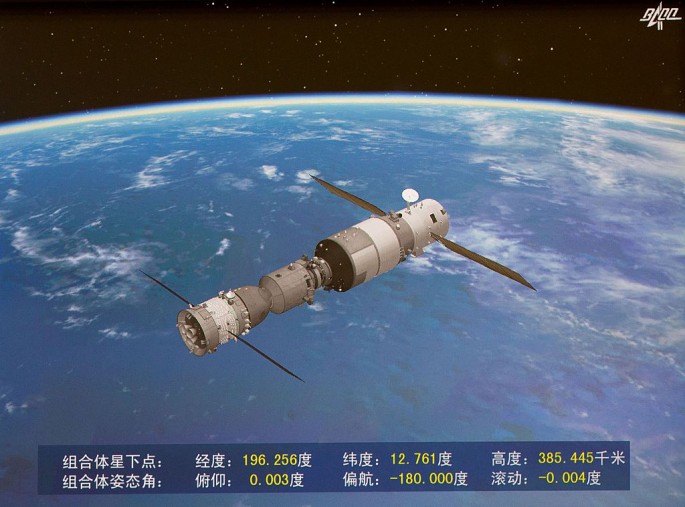China's microsatellite Banxing-2, which was launched on Sunday, Oct. 23, to take pictures of Tiangong-2 space laboratory and Shenzhou-XI, China Daily reported.
The microsatellite weighs about 47 kilograms and roughly the size of a desktop printer. It is equipped with a series of visible light cameras, which include a 25-megapixel camera and wide-angle imagers.
Banxing-2, which was nicknamed "Selfie Stick" by China Central TV, was tasked with taking photographs of Tiangong-2 and the Shenzhou XI spacecraft.
Chen Hongyu, chief engineer of the satellite program and a researcher with the Chinese Academy of Sciences' Microsatellite Innovation Institute, said that the satellite's infrared camera is also temperature-sensitive.
"Like a private nurse for Tiangong II and Shenzhou XI, the companion satellite monitors their conditions all the time, which is helpful in detecting failures," Chen added.
The satellite has three solar panels which it can use to generate power to make orbit adjustments so that it can shoot pictures of the lab and the spacecraft.
The new microsatellite is smaller and has a higher capacity but it has the same mission like its predecessor, Banxing-1, which took pictures of the Shenzou VII in 2008.
Microsatellites have a huge potential use for businesses as they are lighter--weighing only about 100 to 500 kilograms--and they are usually more affordable, faster and more advanced than traditional satellites.
"If a company can combine microsatellites with Internet services, it could produce and launch personalized satellites at a very low price," Wang Huiquan, deputy director of Zhejiang University's Microsatellite Research Center, said.
A project was unveiled by the U.S. government on Friday, Oct. 21, which aims to enhance the commercial space industry. The project is pushing for NASA to invest $30 million in microsatellites which is expected to enable smaller companies to engage in the space industry for business and commercial use.



























